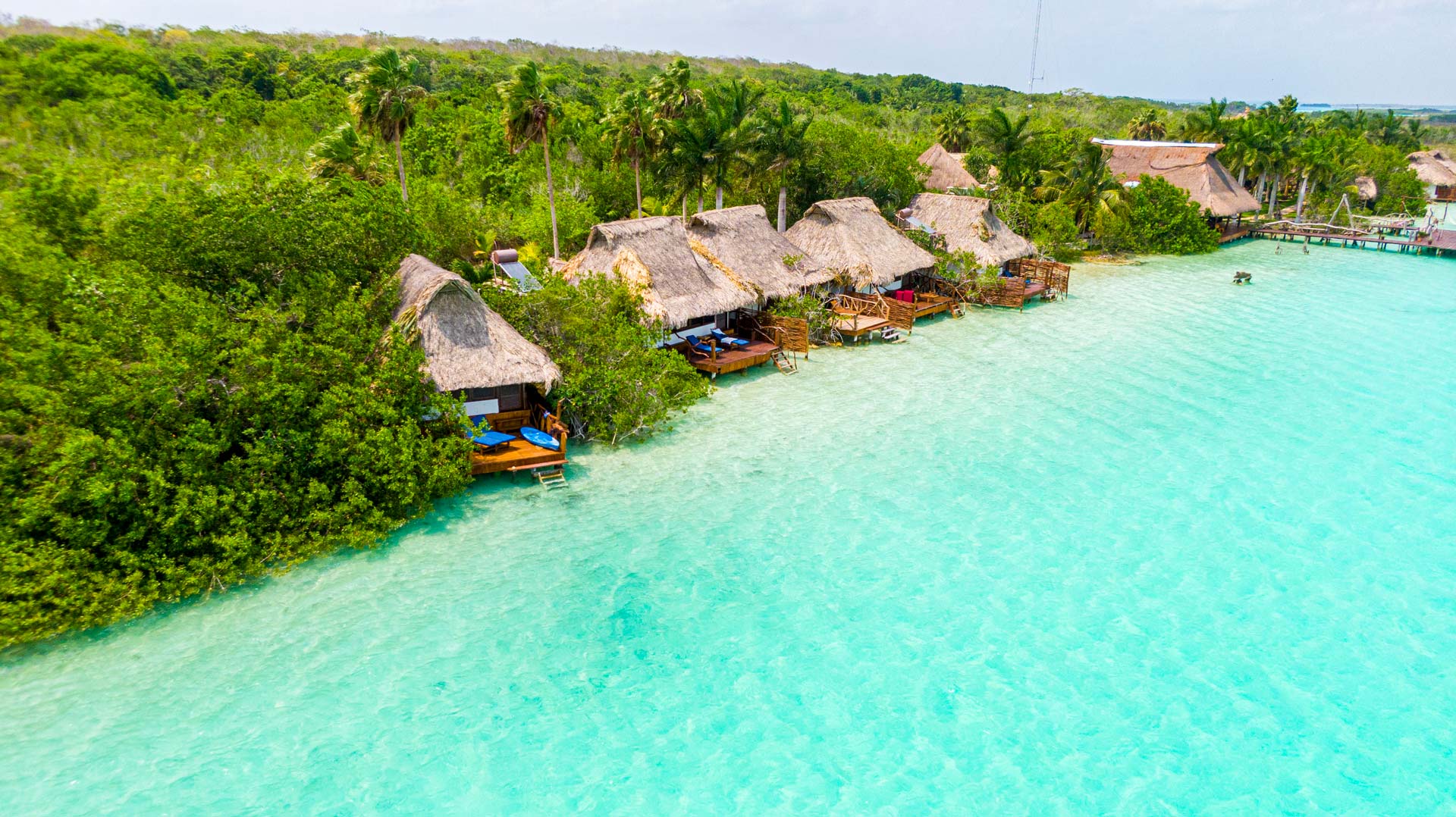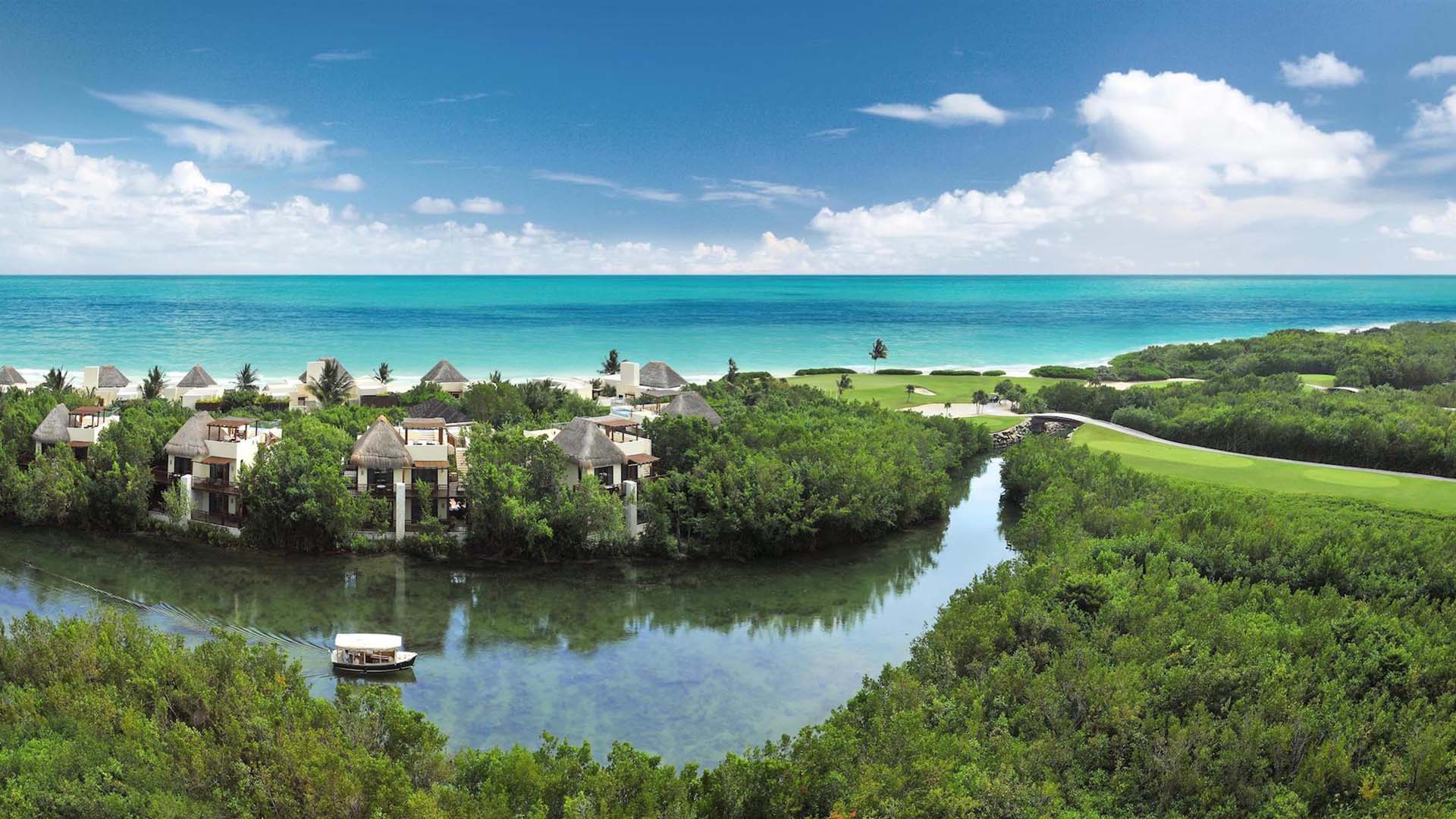
Grand Costa Maya: Paradise Awaits
To the south of the Mexican Caribbean, there’s a region adventurous traveler should not miss: The Grand Costa Maya. This natural paradise receives fewer visitors than the more well-known tourist destinations of Cancún, Tulum, and Playa del Carmen, despite the fact it’s a short 2-hour journey away.
Grand Costa Maya straddles diverse destinations like Chetumal, Bacalar, and Mahahual. Their dazzling cenotes, lagoons, unspoiled beaches, archaeological sites, and attractions make this a haven of leisure, fun, and history.

Chetumal, the southern capital of Quintana Roo, is an excellent starting point for the traveler who wants to discover Grand Costa Maya. Be ready to enjoy this small and quiet city with plenty of options for those seeking culture, adventure, and relaxation. A great place to visit is Payo Obispo Zoo, a park that features butterflies, reptiles, birds and some mammals from the region and other parts of the world.
If you like adventure you can do horseback riding or zip lining among other activities. Last but not least, at the Museo de la Cultura Maya, visitors can appreciate the grandeur and splendor of a civilization that thrived for more than a thousand years.

As soon as travelers arrive in Bacalar, they soon realize why it’s known as a “Magical Town.” – a place where culture, color, and charm come together. Here you can find the imposing Bacalar Lagoon, an enormous body of shallow water where dissolved crystals give the waves a blue-tinged iridescence. Also known as the Seven Colors Lagoon, it’s one of the few places in the world where you can find stromatolites – intriguing natural rock formations produced by millions of harmless bacteria.
Another must-see in Bacalar is the San Felipe Fort, a stronghold built in the 18th century to stop the attacks of pirate ships along the coast. It contains the peculiar Museo de la Piratería (Museum of Piracy) and provides a remarkable view of the lagoon and its jaw-dropping cenotes – naturally forming caves filled with water that are revealed through sinkholes. And speaking of cenotes, Bacalar is home to some of Mexico’s largest and most beautiful, like Cenote Negro, Cenote Esmeralda, Cenote Cocalitos and Cenote Azul.
Worth mentioning is Xcalak, a fishing village with wooden houses and unspoiled coastline ideal for spending some quiet time at the beach. Xcalak is a marvelous natural area, with a focus on diving and relaxation. Close to Mahahual is Chinchorro Bank Biosphere Reserve, a coral atoll 27-miles long that’s legendary not only for its stunning beauty but for being a trap to many ships between the 16th and 19th centuries. The sheer number of shipwrecks still on the seafloor Chinchorro Bank Biosphere Reserve makes it a picturesque dream come true for divers.
Twelve centuries ago, the Mayan civilization was considered to be one of the largest and most developed in the world, with close to one million citizens and technological and artistic growth as advanced as similarly ancient societies. Following the 18-mile route along archaeological sites near Chetumal, with its clear roads and easy-to-understand signposts, travelers can visit Mayan places such as Kohunlich, Dzibanché, Kinichná, Chacchoben and Oxtankah, and marvel at their pyramids, temples, and irrigation systems. It’s a true encounter with history in the middle of the most exuberant nature.
Grand Costa Maya, in the delightful Mexican Caribbean, may not be as popular with tourists as Cancún or Riviera Maya, but for the true traveler, that’s all part of its charm.





